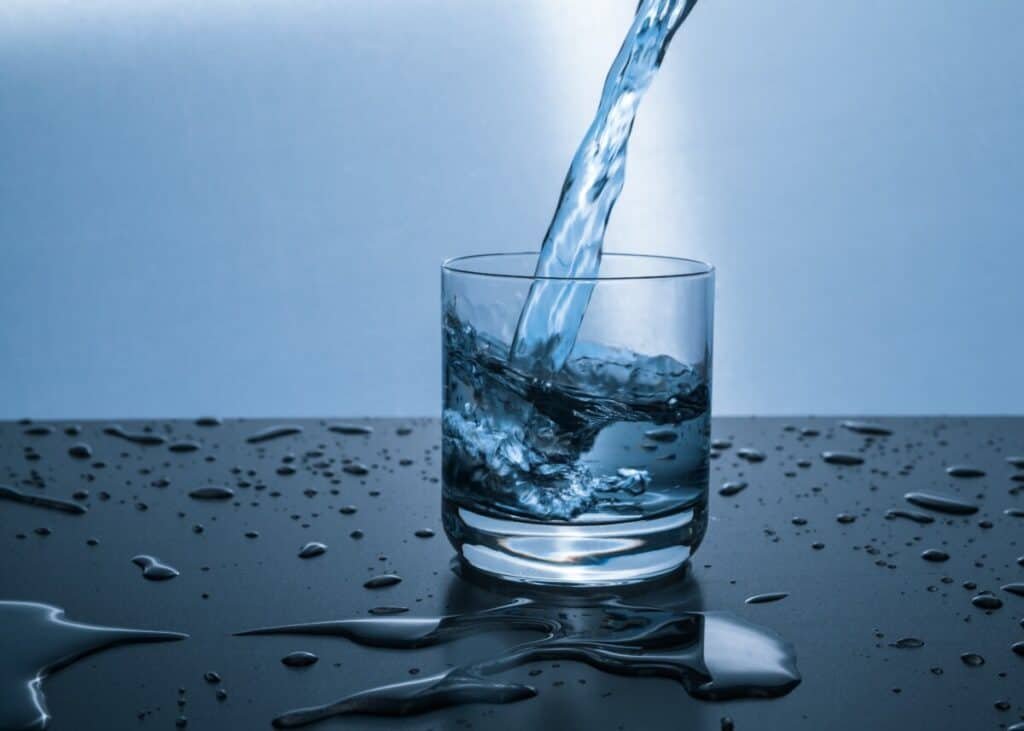Water is the main ingredient in beer. This is often overlooked by new and intermediate brewers. There’s an adage saying, “if your water tastes good, then it’s good to brew with”. Whereas this may be true to some extent, I’m going to give you some informative tidbits that will help you boost your homebrewing game.
Treating your water with acids (like lactic or phosphoric acid), salts (such as calcium chloride or gypsum), and Campden tablets, can make significant improvements to your final beer. We’ll discuss reasons why you would want to make these adjustments here.
Source Water: Can I Brew Beer With This?
As homebrewers, we think of using malt, hops, and yeast to paint our masterpieces. But what about water? Water is the canvas on which our art rests. If the canvas is smooth, we’ll be able to shape and modify textures more easily, whereas if the canvas is rough, we’ll have a tough time making a smooth, glassy surface.
It’s important to know the following things when it comes to your water:
- Where does your water come from?
- Does it come from a well? A municipal water source (e.g., from your tap)? Through a reverse osmosis (RO) filter? From a local spring? Bottled water? Distilled water?
- What’s in your water?
- What are the minerals and what is their concentration?
- Was the water treated with chlorine for sanitation?
In this post, we’ll discuss elements of water and how you can treat your own water to produce the starting canvas you need for making great beer at home.
Chloro-what? Dealing with municipal water sources
Since I started homebrewing in 2013, I’ve used water from one of two sources:
- The faucet (with or without a carbon filter)
- Distilled water from the grocery store
And depending on where I lived and what I wanted to brew, I was tasked with choosing where I got my water from.
If you’ve ever brewed or drank a beer that had a medicinal, Band-Aid® taste or smell, well, let me point you to the source: chlorine in the water. I had a batch that tasted like that once after moving to a new apartment. That’s when I learned I needed to learn more about water treatment.
The use of chlorine and chloramines in public water systems is an inexpensive and highly effective way to sanitize drinking water. The chlorine inactivates or kills microbes that cause waterborne diseases. That’s great for public health.
But in brewing, when left untreated, chlorine will react with compounds known as phenols to create chlorophenols. That’s the medicinal off-flavor mentioned earlier.
To eliminate chlorine (Cl2) and chloramines (discussed here as monochloramine, NH2Cl) from brewing water, sodium metabisulfite (SMB) or potassium metabisulfite (KMB) can be added. Both SMB and KMB can be found sold as Campden tablets. The removal of chlorine is fast using this method, especially if the pH of the water is below 8.0.
Chemical reaction of sodium metabisulfite with chlorine
Na2S2O5 + 2 Cl2 + 3 H2O → 2 Na2HSO4 + 4 HCl
Chemical reaction of sodium metabisulfite with chloramine
Na2S2O5 + 2 NH2Cl + 3 H2O → 2 NaHSO4 + 2 NH4Cl
I’d really recommend using SMB/KMB/Campden tablets when you brew beer at home. It’s a cheap insurance policy, at the very least. For a 5 gal/19 L batch, half of a Campden tablet, crushed, added to your strike water as it’s heating up should be a great starting place.
Discovering Minerality
Understanding What’s Already There
Understanding the mineral composition in your water is important for mastering the design of your beer’s canvas. Some of the important ions (cations and anions) to know are:
- Cations (those with a positive charge)
- Calcium, Ca2+
- Magnesium, Mg2+
- Sodium, Na+
- Anions (those with a negative charge)
- Chloride, Cl– (not to be confused with chlorine content)
- Sulfate, SO42-
- Carbonate, CO32-
Knowing the hardness (Ca2+ and Mg2+ concentration) and alkalinity (CO32- and bicarbonate, HCO3–, concentration) are important, so if you need a quick and easy option to get an idea of what your water is like, using a GH/KH test kit (find on Amazon) will give you that information pretty quickly.
David Heath on YouTube has a great video on testing water for homebrewing on a budget. See the video here (link).
Another option includes sending a water sample to a laboratory such as Ward Labs to get a full report on the ions listed above. These tests should also measure the total hardness and alkalinity of the water. If you use Ward Labs, order the Household Complete Mineral Test, W-5, or the Brewer’s Test, W-501.
There are expensive test kits you can purchase and use that are overkill, in my opinion. I’m a chemist, and though I’d love to use everything in the kit, it’s just not worth the price tag for what I need for my brewing.
At the very least, find out the alkalinity (as mEq/L or ppm as CaCO3) and total hardness (ppm as CaCO3) to get an understanding of how your water will affect the pH of your mash.
Making Adjustments
Once you know your water’s composition, it’s time to make any necessary adjustments.
As an example, I sent a water sample to Ward Labs in 2022. The values I got from the lab report are reported here:
| Cation | ppm | Anion | ppm |
| Sodium, Na | 71 | Sulfate, SO4-S | 20 |
| Potassium, K | 2 | Chloride, Cl | 36 |
| Calcium, Ca | 0.5 | Carbonate, CO3 | < 1.0 |
| Magnesium, Mg | <1 | Bicarbonate, HCO3 | 57 |
I entered this information into the brewing software I use, Brewfather–they have a handy walkthrough for entering in data from a water report here.

When building recipes in Brewfather, I use this profile as my water source and allow the software to help me make adjustments to my mash and sparge water profiles. From there, I can adjust pH with acid additions (more on this later), and manipulate the cation and anion concentrations with salts.
The salts I use are:
- Gypsum (calcium sulfate, CaSO4)
- Calcium chloride (CaCl2, as a dihydrate–CaCl2 · 2 H2O)
- Epsom salt (magnesium sulfate, MgSO4)
- Chalk (calcium carbonate, CaCO3)
- Canning salt (sodium chloride, NaCl)
- Baking soda (sodium bicarbonate, NaHCO3)
Most often, I only use gypsum and calcium chloride to modify my Ca2+, Cl–, and SO42- concentrations.
Links to these items and other products I recommend can be found on my Support page.
Managing pH
Now that you have an understanding of your water’s alkalinity and hardness, it’s time to adjust the pH of your mash, if necessary.
For most brewers, acid additions are the most common pH adjustment strategies needed. Here are a few options:
- Lactic Acid
- Often sold as a 88% solution, this is a very common acid choice. Typically 1 to 3 mL per 19 L/5 gallon batch is used.
- Phosphoric Acid
- Often sold as a 10% solution, this can be another great choice.
- Acidulated Malt
- Acidulated malt is considered to be an appropriate choice for pH adjustment in keeping with the Reinheitsgebot if that’s of interest to you. Although, fine-tuning the pH with this method requires some trial and error.
One thing that is important to know here is that you should use a calibrated pH meter to measure and adjust pH. pH readings should be performed at room temperature (around 20 °C or 68 °F), not at mash temperatures.
Typically, a target of pH 5.2–5.6 is desired for the mash step.
Conclusions
Water truly is one of the most overlooked aspects of homebrewing for most beginner and intermediate homebrewers. But with a little understanding and experimentation, the quality of your homebrew will increase significantly once you start playing around with water chemistry.
Cheers!

